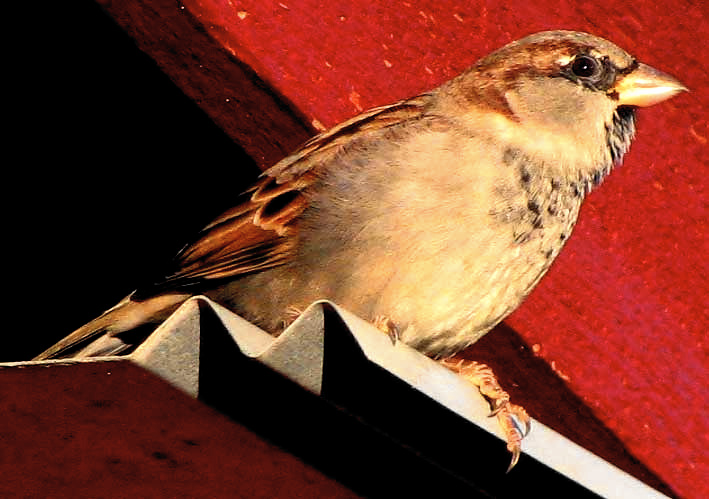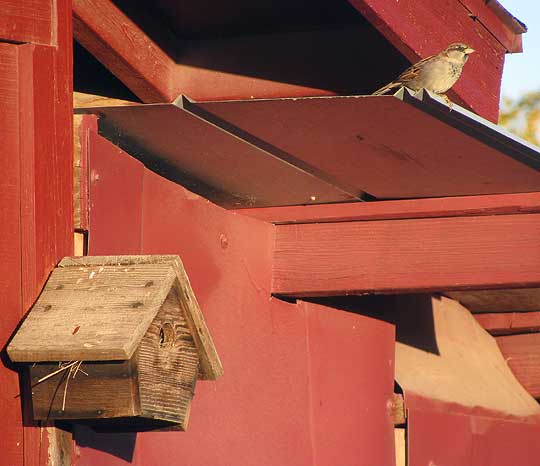Excerpts from Jim Conrad's
Naturalist Newsletter

from the November 11, 2012 Newsletter issued from the valley of the Dry Frio River in northern Uvalde County, southwestern Texas, on the southern border of the Edwards Plateau; elevation ~1750m (~5750 ft); N29.62°, W99.86°; USA
LOUNGING HOUSE SPARROWS
We have House Sparrows here, sometimes called English Sparrows. They're PASSER DOMESTICUS, introduced from Europe, and now they're spread throughout most of North, Central and South America. Despite their enormous distribution, I was a little surprised to find them here. At my bases in Mississippi I didn't see them because there I lived mostly surrounded by forest, and House Sparrows can't compete with native species in such woodsy environments.
However, here in the valley of the little Dry Frio River the valley floor is mostly occupied by ranchland where livestock knock grain from feed troughs and seeds pass through guts and end up in cow paddies filled with undigested grain, thus providing House Sparrows with food. And there are barns, sheds, outbuildings and homes with all kinds of corners in which House Sparrows love to build nests.
So, on chilly mornings here before the hot afternoons roll around, it's common to see House Sparrows sunning themselves, their bodies turned to receive maximum exposure to the warming morning sunlight. They're not as nervous about nearby humans as other bird species. You can see one who likes to sun himself each morning in a certain spot behind the cabin below.

Actually, I don't think that bird ever uses the nesting box just below him. It's hole is too small, I think -- probably purposefully made that way just to keep House Sparrows out. That nesting box is meant for native bluebirds and wrens. Lots of people don't like House Sparrows, thinking of them as little more than invasive, flying mice.
I rather like House Sparrows, however. Back in the 70s when I lived in Nashville, Tennessee I wrote a book on "One Year in the Life of a House Sparrow," and by the end of that book I was feeling empathy with the House Sparrows I found begging for breadcrumbs in the park and hanging around sloppy back alleys. You might enjoy that book. It's online at http://www.backyardnature.net/sparrow.htm, and you can download the book in various formats at http://www.backyardnature.net/j/books/index.htm#yellow.
The book is about a female House Sparrow, but the bird in our picture is a male. You can have a better look at him at the top of this page.
You know he's a male because of the black speckles below his chin and on his chest. Mature males during the breeding season are starkly black in these areas, plus their bills and the area around their eyes are all black. However, after molting in the fall, their winter plumage is more or less what you see in that picture. I suspect that our shed-sitter is an immature male, perched there contemplating his very first season of autumnal sun-basking.